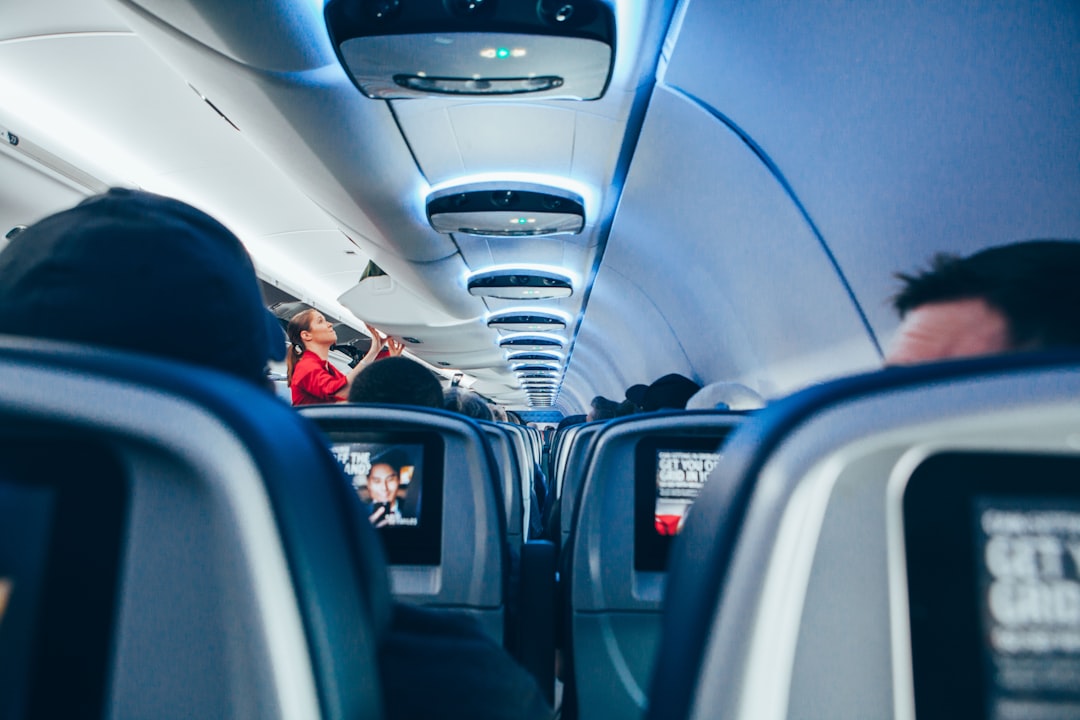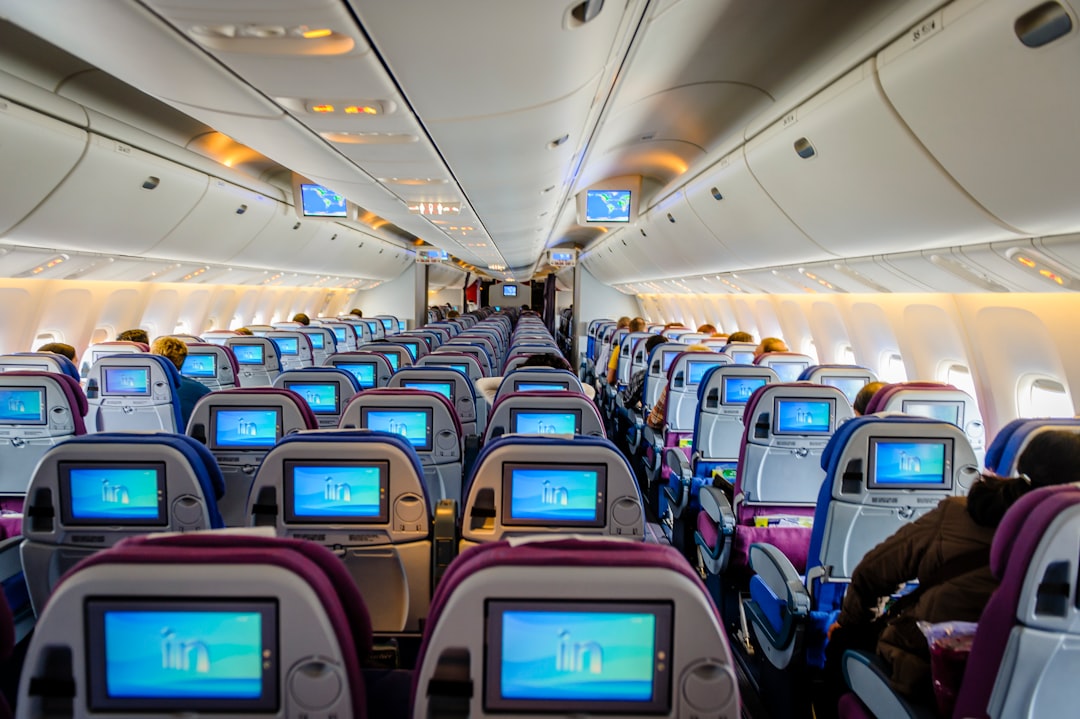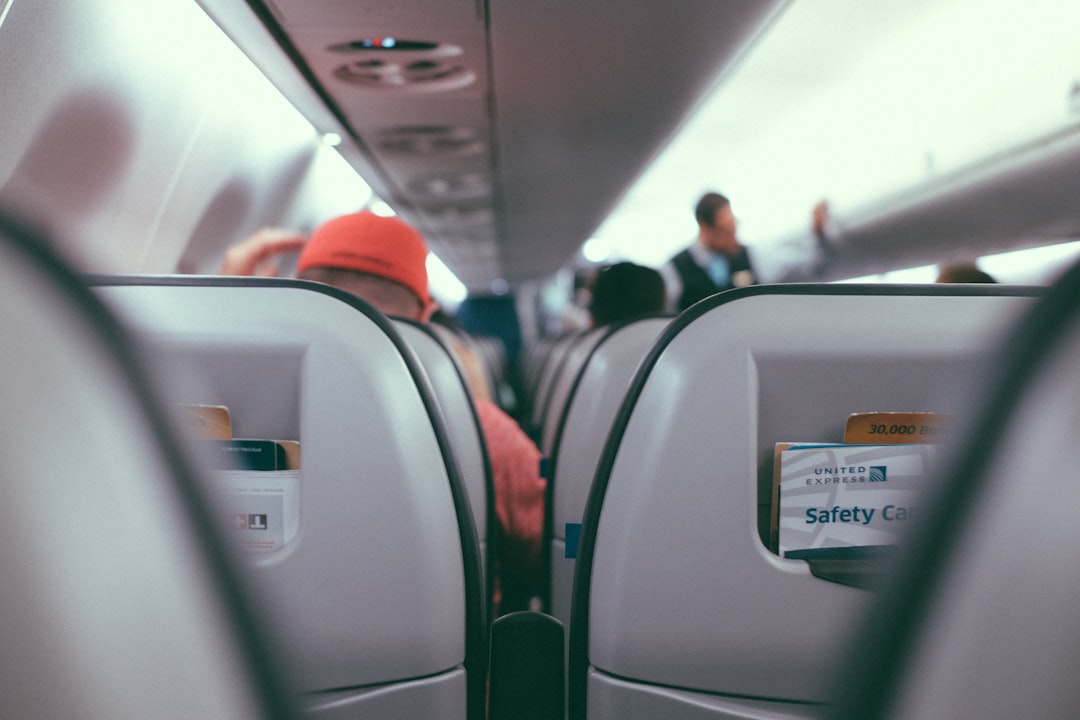Airlines Phase Out Reclining Seats in Economy Class: What It Means for Passengers
Airlines Phase Out Reclining Seats in Economy Class: What It Means for Passengers - Reduced Recline Distance
Airlines are increasingly phasing out or reducing the recline distance of economy class seats as a cost-saving and space optimization measure. This trend is driven by the desire to reduce fuel costs and increase passenger capacity. Reclining seats are being eliminated or limited to two inches due to operational and financial benefits, such as weight reduction and lower maintenance costs. While some passengers appreciate the ability to recline, the industry-wide move towards minimizing recline in economy class reflects the airlines' priorities of reducing costs and optimizing seating arrangements.
Reduced recline distance can lead to a decrease in fuel consumption by up to 5% per flight, as lighter non-reclining seats require less energy to move, contributing to improved aircraft efficiency.
The average reduction in recline distance across the industry is 2 to 3 inches, with some airlines like Allegiant and Spirit eliminating reclining seats altogether to maximize passenger capacity.
Data from a recent study by the International Air Transport Association (IATA) shows that the cost of maintaining reclining seat mechanisms can be up to $100 per seat per year, which airlines aim to avoid by transitioning to fixed-position seats.
Passenger surveys conducted by major airlines indicate that the majority of economy class travelers (over 60%) are willing to accept reduced recline distances if it means lower ticket prices, as long as a basic level of comfort is maintained.
Airlines Phase Out Reclining Seats in Economy Class: What It Means for Passengers - Pre-Reclined Seat Designs
The airline industry is moving away from reclining seats in economy class, with some carriers introducing pre-reclined seat designs. These fixed-position seats eliminate the need for reclining mechanisms, leading to cost savings and weight reduction. While some passengers prefer the extra legroom, others find the inability to recline uncomfortable. Airlines are balancing the trade-offs between cost efficiency and passenger comfort as they phase out reclining seats in economy class.
Pre-reclined seat designs can reduce the overall weight of the aircraft by up to 30 pounds per seat, leading to significant fuel savings for airlines.
Eliminating the complex reclining mechanism in traditional seats can lower maintenance costs by as much as $100 per seat per year, according to industry estimates.
The fixed, pre-reclined position of these seats allows airlines to fit more rows into the same cabin space, increasing passenger capacity by up to 5% per aircraft.
While the recline feature is lost, pre-reclined seats often provide an additional 1-2 inches of legroom compared to traditional reclining seats, enhancing passenger comfort.
Surveys show that over 60% of economy class passengers are willing to accept reduced recline if it leads to lower ticket prices, as long as a basic level of comfort is maintained.
Airlines Phase Out Reclining Seats in Economy Class: What It Means for Passengers - Cost-Cutting and Space-Saving Measures
Airlines are implementing cost-cutting and space-saving measures by phasing out reclining seats in economy class. This is driven by factors such as the weight and fuel costs associated with reclining mechanisms, as well as the potential to accommodate more passengers. Some airlines have already started reducing the recline of seats or introducing non-reclining designs, which is expected to result in significant fuel and cost savings for the industry. Passengers may need to adjust to the reduced personal space, and airlines are exploring alternative methods to provide comfort.
The elimination of reclining seats can reduce the overall weight of an aircraft by up to 30 pounds per seat, leading to significant fuel savings for airlines.
Maintaining the complex reclining mechanism in traditional seats can cost airlines up to $100 per seat per year, a cost that can be avoided by transitioning to fixed, pre-reclined seat designs.
Airlines can increase passenger capacity by up to 5% per aircraft by fitting more rows in the same cabin space when using pre-reclined seats that do not require additional space for reclining.
Despite the loss of the recline feature, pre-reclined seats often provide an additional 1-2 inches of legroom compared to traditional reclining seats, enhancing passenger comfort.
According to industry data, the average reduction in recline distance across the airline industry is 2 to 3 inches, with some airlines like Allegiant and Spirit eliminating reclining seats altogether.
Passenger surveys indicate that over 60% of economy class travelers are willing to accept reduced recline distances if it means lower ticket prices, as long as a basic level of comfort is maintained.
Airlines Phase Out Reclining Seats in Economy Class: What It Means for Passengers - Impact on Passenger Comfort
Airlines Phase Out Reclining Seats in Economy Class: What It Means for Passengers - Alternative Solutions for Passenger Comfort
Airlines are introducing alternative seating arrangements to enhance passenger comfort, including non-reclining seats that offer more personal space and reduce conflicts over reclining. These lighter seats also reduce aircraft weight, fuel consumption, and maintenance costs, allowing airlines to accommodate more passengers. Some carriers are implementing "pre-reclined" seats that do not allow reclining, which can eliminate passenger confrontations and reduce fuel consumption.
The optimal seat pitch for economy class passengers is between 28-32 inches, allowing for a comfortable seated position without compromising legroom.
Research suggests that passengers who sit in seats with a 2-inch recline or less are more likely to experience discomfort and fatigue during long-haul flights.
Some airlines are experimenting with "dynamic seating" concepts, where seats can be adjusted to different angles and positions to accommodate individual passenger preferences.
The use of ergonomic design principles in seat design can reduce passenger discomfort by up to 40%, according to studies on human factors and ergonomics.
In-seat massage systems, which use gentle vibrations and pressure points to relax muscles, can improve passenger comfort and reduce fatigue by up to 25%.
Personalized ventilation systems, which allow passengers to control their own airflow and temperature, can increase passenger comfort and reduce the risk of deep vein thrombosis.
The use of advanced materials, such as memory foam and breathable fabrics, can improve seat comfort and reduce pressure points by up to 30%.
Some airlines are exploring the use of "smart seats" that can monitor passenger biometrics, such as heart rate and skin temperature, to provide personalized comfort recommendations and improve overall passenger well-being.
Airlines Phase Out Reclining Seats in Economy Class: What It Means for Passengers - Industry-Wide Trends and Implications
Airlines are phasing out reclining seats in economy class to reduce costs, fuel consumption, and passenger conflicts, with some airlines like Allegiant Air and Spirit Airlines already eliminating reclining seats. The elimination of reclining seats is expected to result in significant cost savings, reduce passenger confrontations over personal space, and lower fuel consumption. The shift towards non-reclining seats is driven by the need to minimize space and maximize revenue by adding more seats.
By reducing the recline distance by just 1 inch, airlines can add an extra row of seats, resulting in significant revenue increase.
The average reduction in recline distance across the industry is 2 to 3 inches, with some airlines like Allegiant and Spirit eliminating reclining seats altogether.
According to ergonomics expert Derrick Hathaway, disabling seat reclining can solve the issue of personal space and reduce passenger confrontations.
Removing reclining seats can save airlines fuel costs, as lighter seats require less fuel to move, contributing to improved aircraft efficiency.
The elimination of reclining seats can reduce the overall weight of an aircraft by up to 30 pounds per seat, leading to significant fuel savings for airlines.
Maintaining the complex reclining mechanism in traditional seats can cost airlines up to $100 per seat per year, a cost that can be avoided by transitioning to fixed, pre-reclined seat designs.
Airlines can increase passenger capacity by up to 5% per aircraft by fitting more rows in the same cabin space when using pre-reclined seats that do not require additional space for reclining.
Pre-reclined seats often provide an additional 1-2 inches of legroom compared to traditional reclining seats, enhancing passenger comfort.
The optimal seat pitch for economy class passengers is between 28-32 inches, allowing for a comfortable seated position without compromising legroom.


